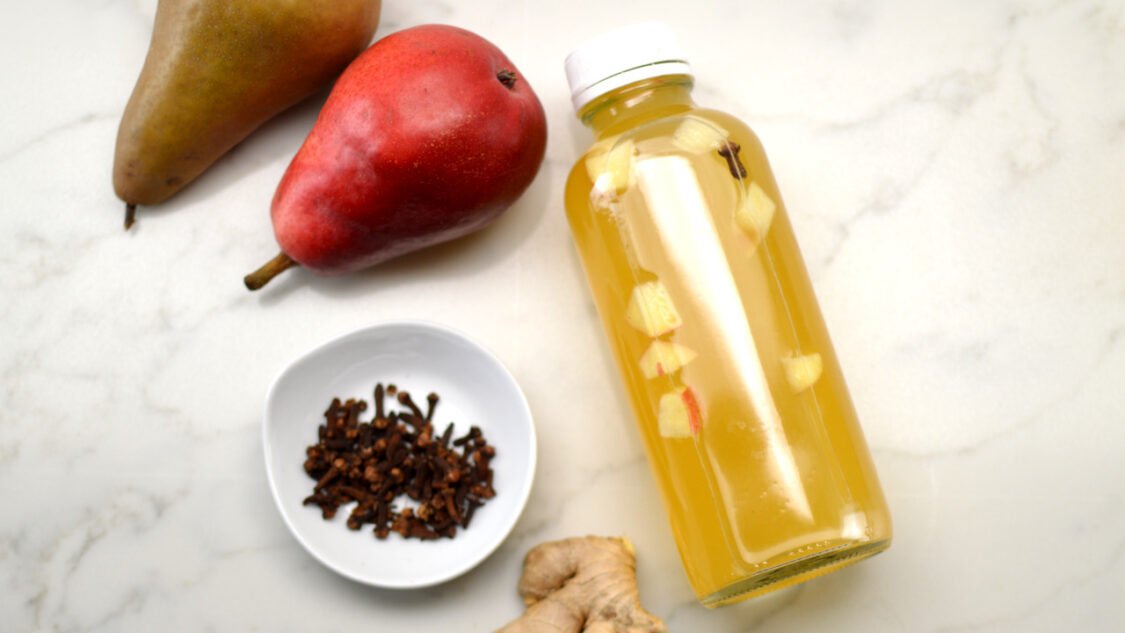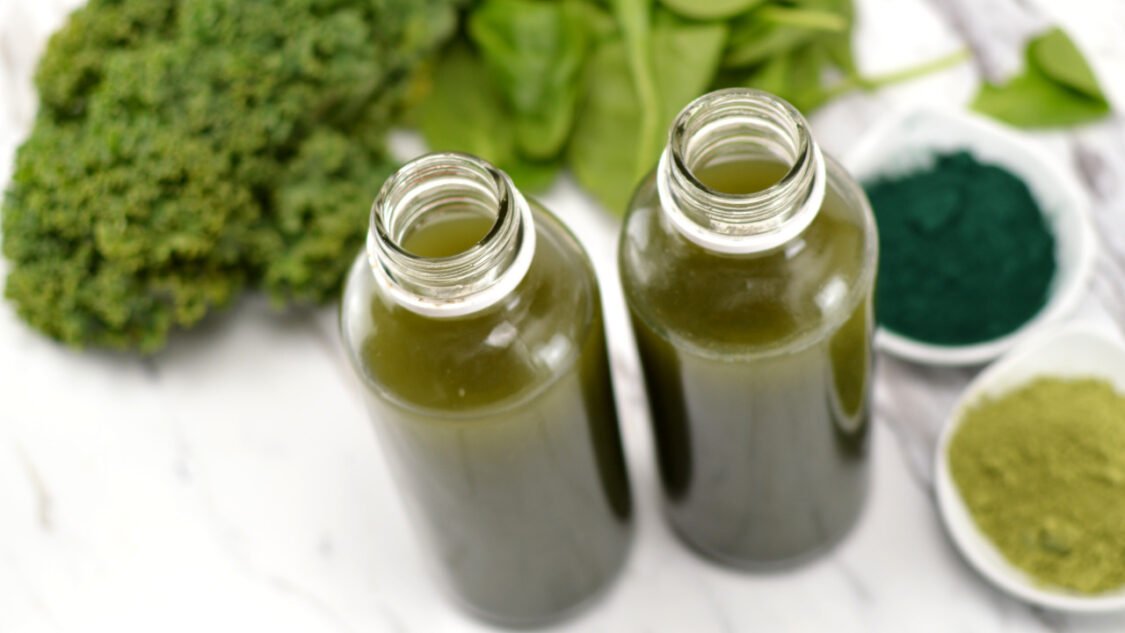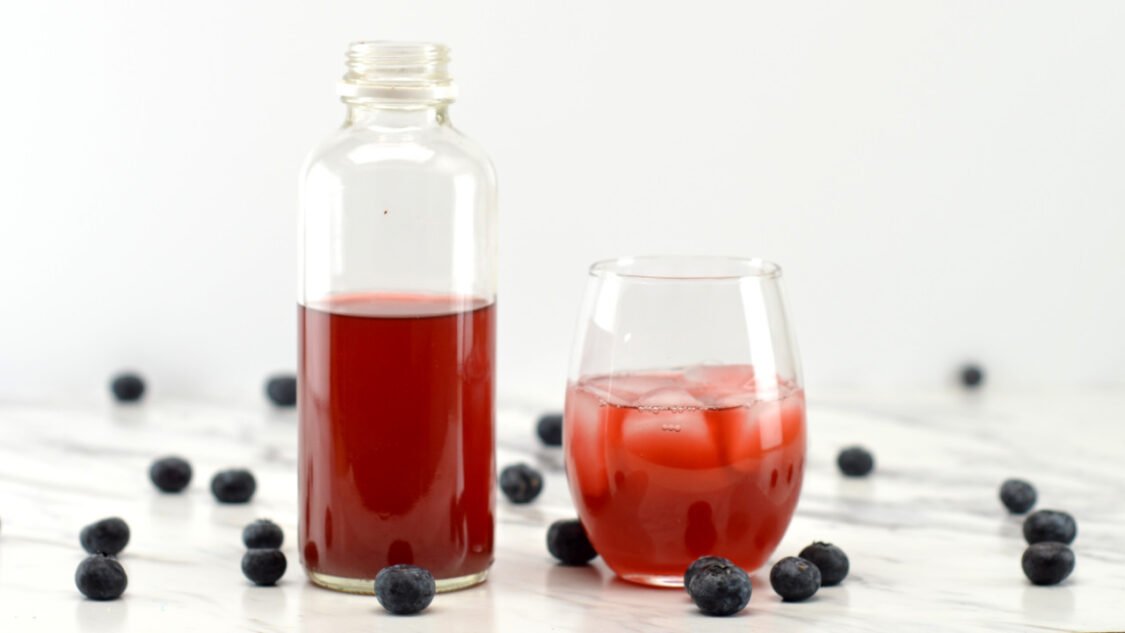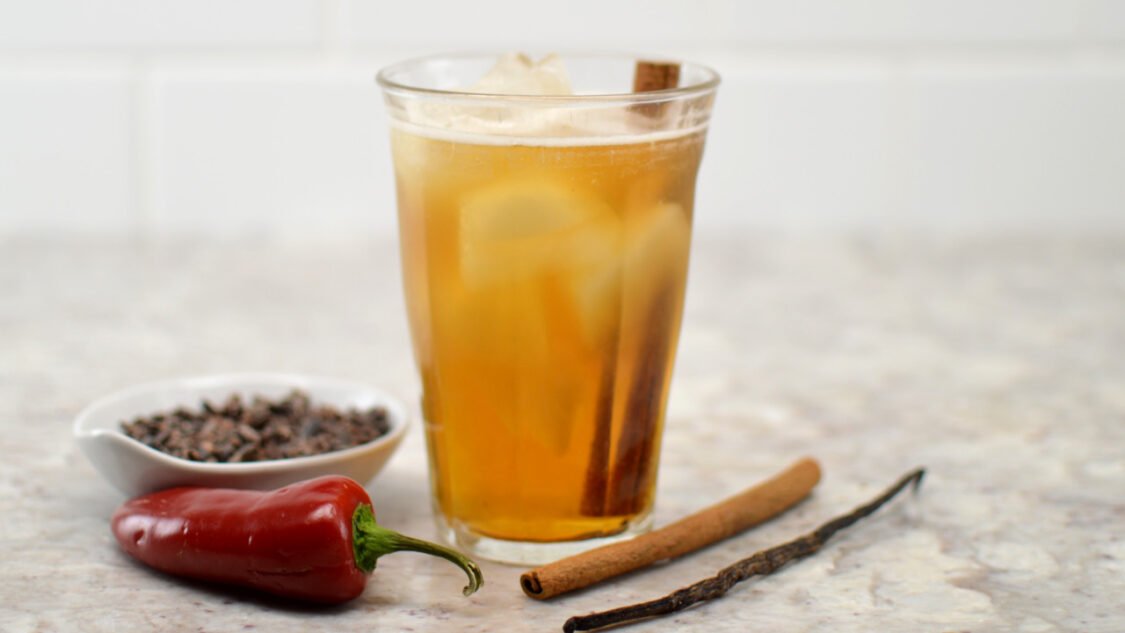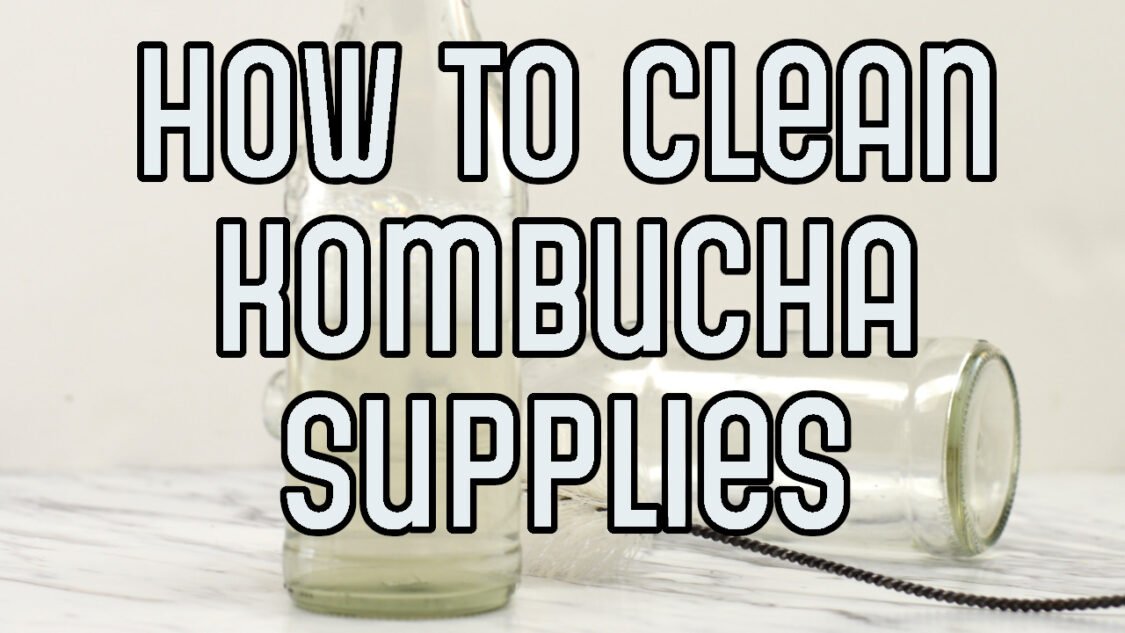Pomegranate Kombucha

Pomegranates have a long and rich history, with evidence of their cultivation dating back to ancient civilizations in the Middle East, such as Persia and Mesopotamia. The fruit was considered a symbol of prosperity and fertility, and was often depicted in artwork and mythology. Pomegranates were also valued for their health benefits, with their juice and seeds used in traditional medicine to treat a variety of ailments.
Pomegranates are enjoyed for their tart and sweet flavor, and are used in a variety of dishes and beverages (like pomegranate kombucha!), including juices, syrups, salads, and baked goods. The juice and seeds are also used as a source of antioxidants, which are believed to help protect against diseases such as heart disease and cancer.
Drink pomegranate kombucha on ice or use it to make a refreshing Sparkling Pomegranate Kombucha Mocktail.
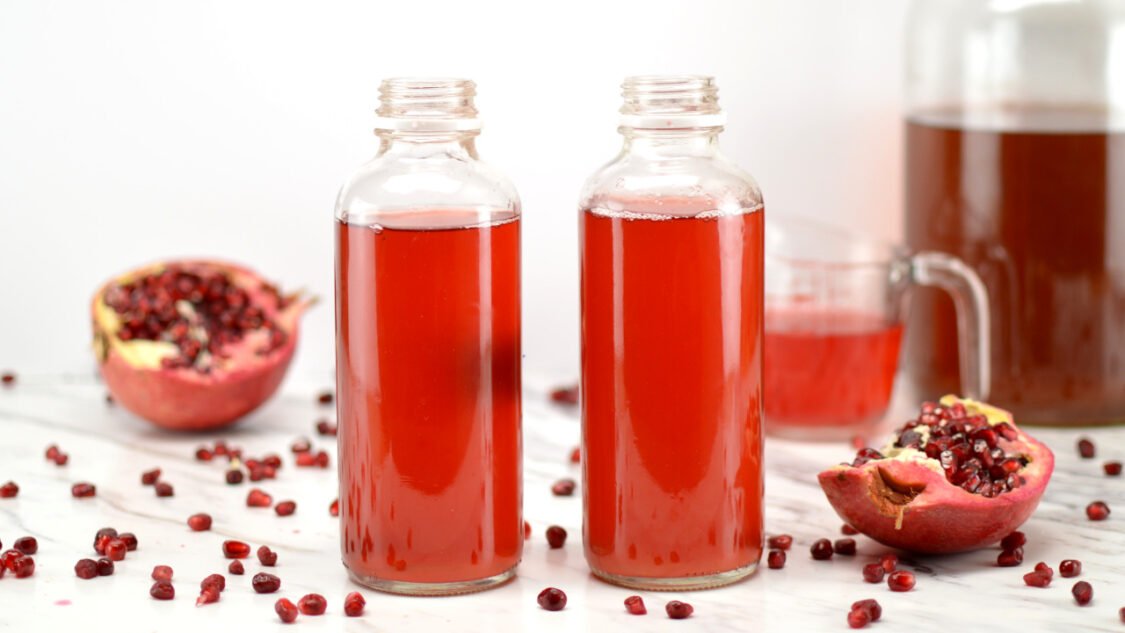
Kombucha Fermentation Overview
There are two fermentation phases when making kombucha:
Primary Fermentation: This is when you transform sweet tea into tart and tasty kombucha. Get all the details at my article on how to make kombucha.
Secondary Fermentation: This is when you carbonate your homemade kombucha by adding flavors (like pomegranate) and sugars and bottling it.
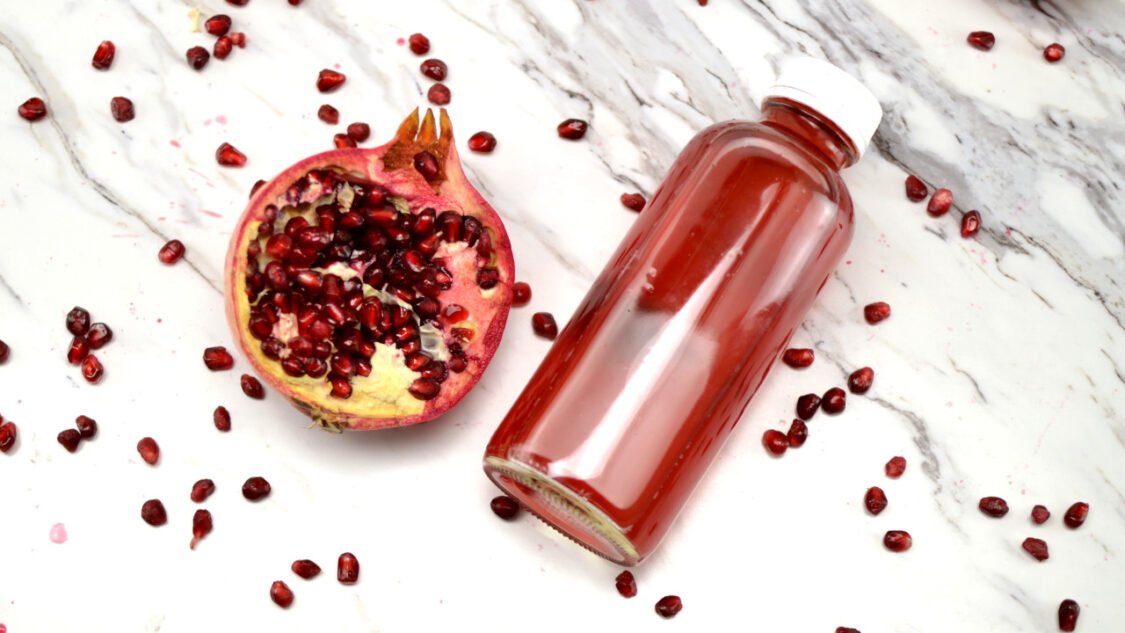
Preparing for Secondary Fermentation
This recipe makes about 7 x 16 fluid ounce bottles of finished kombucha (from a 1-gallon batch of unflavored homemade kombucha aka from your primary fermentation).
Reserve 2 cups (about 16 oz / 0.47L) kombucha and your SCOBY from your completed primary fermentation and set aside – you will use this as your starter for your next gallon batch of kombucha.
With your kombucha starter tea and SCOBY placed aside, you now have enough kombucha left to flavor and fill your bottles. This guide assumes are using 16 oz. glass bottles which are a popular choice for kombucha; however, there are many options for bottling kombucha.
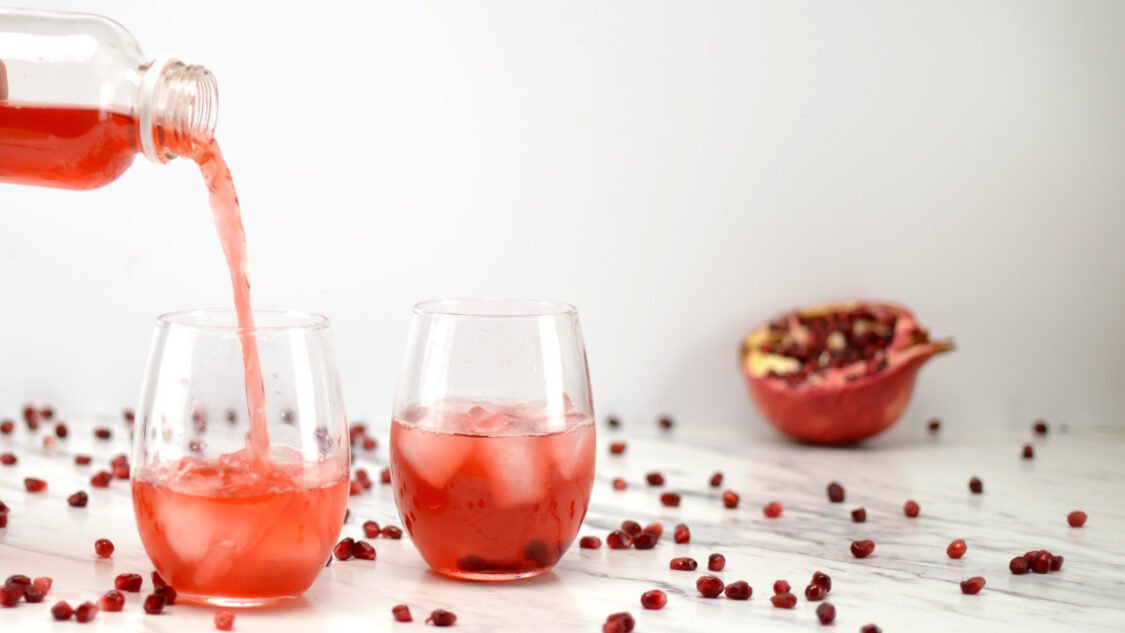
Ingredients to make Pomegranate Kombucha
Kombucha: Finished kombucha from your first fermentation is the base to which you will add the pomegranate flavor.
Pomegranate: Pomegranates are typically described as having characteristics of sour, sweet, musty/earthy, fruity with an astringent (puckering) mouthfeel. They are very similar to cranberries–fairly tart with a bit of sweetness underneath. Pomegranates have a number of potential health benefits, including:
- Antioxidant properties: Pomegranates are a rich source of antioxidants, which can help protect cells from damage caused by free radicals.
- Heart health: Studies suggest that consuming pomegranate juice may help lower blood pressure and reduce the risk of heart disease.
- Anti-inflammatory effects: Pomegranates contain anti-inflammatory compounds that may help reduce inflammation in the body and improve overall health.
- Cancer prevention: Some studies suggest that pomegranates may have anti-cancer properties and may help prevent the growth of certain types of cancer cells.
- Improved digestion: Pomegranates are a good source of fiber, which can aid digestion and prevent constipation.
Sugar: For this recipe we will make a blueberry syrup with water and sugar. The additional sugar is for the bacteria and yeast to feed on which creates carbonation–extra fizzy goodness.
How to make Pomegranate Kombucha
Make flavor syrup: Combine pomegranate, sugar and water to a small saucepan and make a pomegranate syrup.
Add Flavors: Add flavor syrup to each bottle.
Bottle: Transfer kombucha to fermentation bottles.
Condition: For 3 to 10 days, until it reaches the carbonation level you like.
Enjoy: Chill in the fridge before serving.
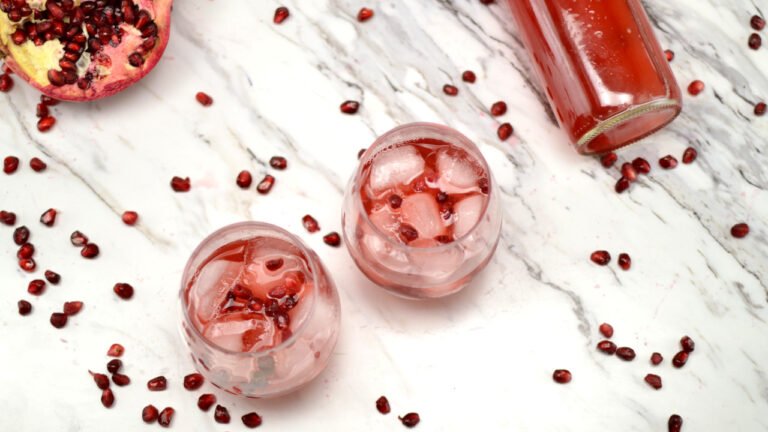
Pomegranate Kombucha Recipe
Yield: 7 bottles • Active time: 20 minutes • Total time: 3 -10 days

This recipe assumes you are doing a secondary fermentation (flavoring and carbonation) in the bottle. You may also incorporate a third fermentation using the same proportions but following the third fermentation steps.
Ingredients:
1-gallon homemade kombucha from a first fermentation, 1.9 L
1 cup pomegranate arils, 148 g
1 cup tap water, 240 g
1 cup sugar 201g
Instructions:
Prepare flavor syrup: Combine pomegranate, sugar and water to a small saucepan. Heat on medium until the mixture begins to simmer. Using the back of a large spoon or a potato masher, gently smash the arils to release their flavors and sugars. Remove from heat and let cool to room temperature. (You can set the pan in a bowl of ice water to speed up the cooling process.) Once cool, strain into a heat resistant glass measuring cup. You should have about 1 cup of flavored syrup.
Flavor: Evenly divide pomegranate syrup between bottles. About 2 Tbsp tsp per bottle.
Sweeten: Since the syrup contains the sugar, there is no need to add more sugar!
Fill bottles: Transfer kombucha into fermentation bottles, leaving about 1 inch empty space at the top.
Cap: Cap the filled bottles and tighten the cap snugly.
Ferment: Place in a dark, room temperature area for 3 to 10 days, until it reaches the carbonation level you like. This process will go faster in warmer climates, and slower in cooler climates.
Enjoy: Chill your pomegranate kombucha in the fridge before serving. Since this recipe uses a flavoring syrup there is typically no reason to strain it unless baby SCOBYs form in the bottles.
Homemade pomegranate kombucha can be stored in the fridge, tightly sealed, for several weeks.
Tips & Tricks:
Make sweet tea for your next batch the night before you flavor and bottling and let it cool on the stove overnight so that you can flavor your kombucha and get your next batch started at the same time.
If this is your first time brewing, it may be helpful to use a plastic water bottle as a gauge. Fill a recyclable plastic bottle with kombucha (leaving 1.5 inches empty at the top). When this bottle becomes rock hard, you’ll know the glass bottles are also ready. This will help you gauge how long it take for kombucha to carbonate your climate and will prevent bottle explosions.
Nutrition Information:
Kombucha Recipes You Might Also Like
More Kombucha Knowledge
Helping you learn to brew kombucha, find inspiration for new kombucha flavors and use kombucha to make kombucha mocktails


